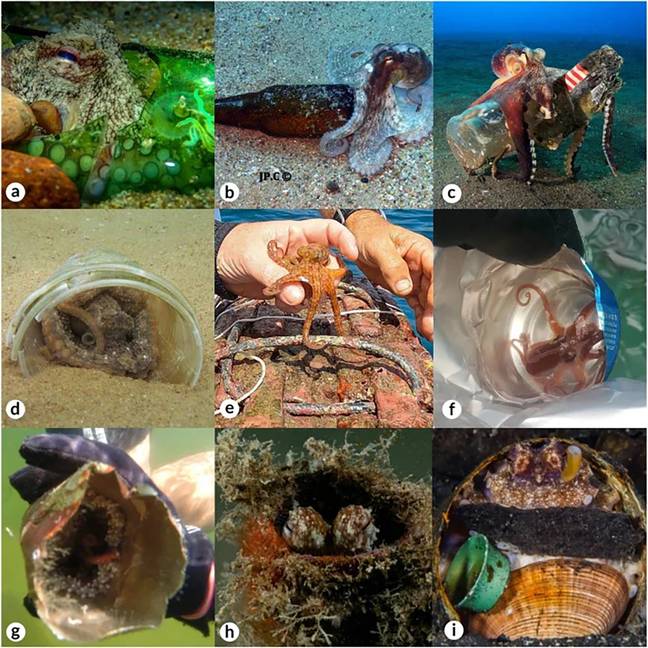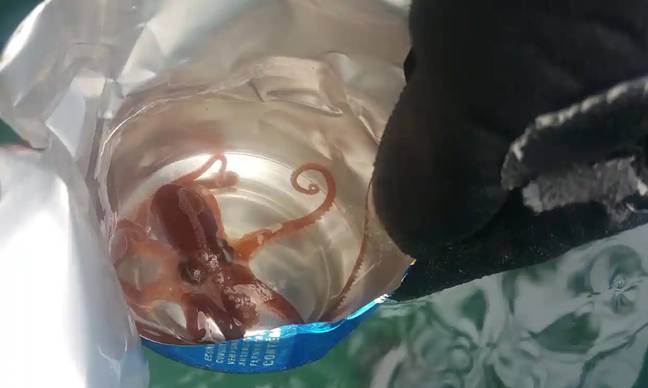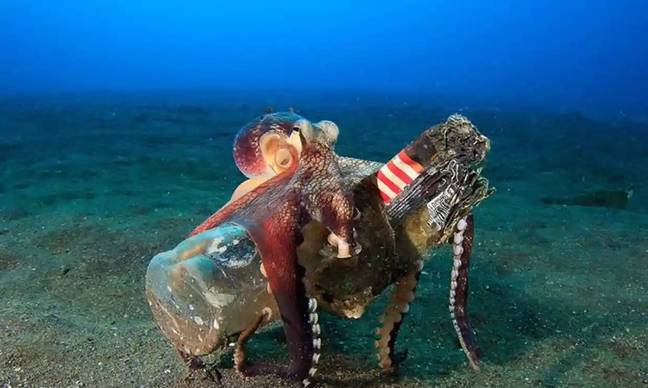A new study examining images captured on the ocean floor shows how octopuses are increasingly using discarded trash as shelter.
Research published in Marine Pollution BulletinIn this study, document the 24 species of octopus in total, and explore how the creatures used bottles, cans, and even old batteries either to house themselves or as a safe place to keep their eggs.
In their summary, the authors said how octopuses have been extensively documented using artificial shelters for decades, but “this use appears to be increasing.”
“Despite any potential positive effects, the use of litter as a shelter may have negative effects,” they wrote.

After examining 261 underwater images – with contributions from research institutions and social media sources with permission – the team identified “8 genera and 24 species of benthic octopuses interacting with litter”.
Glass objects were present in 41.6 percent of the interactions, and plastic in 24.7 percent, while the researchers found that Asia provided the largest number of images in the study.
“This information is essential to help prevent and mitigate the effects of litter on octopuses, and to identify knowledge gaps that require attention,” they said.
“The deep-sea records were very interesting, because even at great depths these animals interact with litter,” said research supervisor Mayra Proite, a professor at the Federal University of Rio Grande in Brazil.

“They clearly see that there is a lot of rubbish around, so it can act as a kind of artificial camouflage.
“It shows their ultimate adaptability. They are very intelligent animals, and will use what they have at their disposal to continue sheltering or roaming with protection.”
The most common interaction recorded in the study was the use of litter as shelter.
The research also found that octopuses show a preference for unbroken items, along with dark or opaque enclosures.
The most common interaction recorded in the study was the use of litter as shelter.

“While these interactions may appear positive for animals because they lack natural shelters such as seashells, it is not a good idea to think that animals might be using litter as shelter because the seashells are gone,” added Priwetti.
The team believes more research is needed to fully investigate the impact of octopuses using human litter.
“It is possible that the negative effects of litter on octopuses may be underestimated due to the lack of available data, and therefore we emphasize that the problem should be evaluated more comprehensively,” they wrote.

“Wannabe internet buff. Future teen idol. Hardcore zombie guru. Gamer. Avid creator. Entrepreneur. Bacon ninja.”



